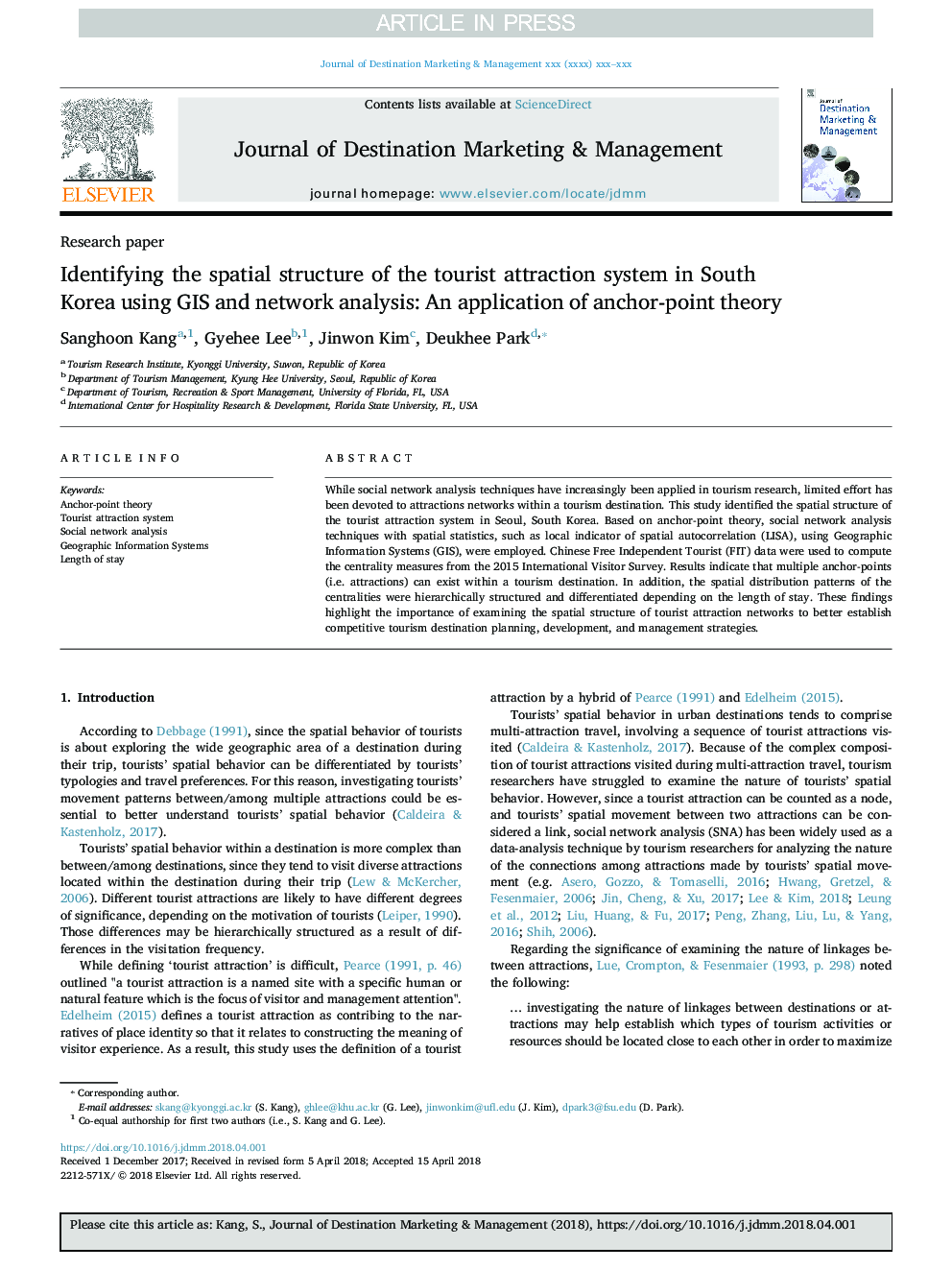| Article ID | Journal | Published Year | Pages | File Type |
|---|---|---|---|---|
| 7419427 | Journal of Destination Marketing & Management | 2018 | 13 Pages |
Abstract
While social network analysis techniques have increasingly been applied in tourism research, limited effort has been devoted to attractions networks within a tourism destination. This study identified the spatial structure of the tourist attraction system in Seoul, South Korea. Based on anchor-point theory, social network analysis techniques with spatial statistics, such as local indicator of spatial autocorrelation (LISA), using Geographic Information Systems (GIS), were employed. Chinese Free Independent Tourist (FIT) data were used to compute the centrality measures from the 2015 International Visitor Survey. Results indicate that multiple anchor-points (i.e. attractions) can exist within a tourism destination. In addition, the spatial distribution patterns of the centralities were hierarchically structured and differentiated depending on the length of stay. These findings highlight the importance of examining the spatial structure of tourist attraction networks to better establish competitive tourism destination planning, development, and management strategies.
Related Topics
Social Sciences and Humanities
Business, Management and Accounting
Business, Management and Accounting (General)
Authors
Sanghoon Kang, Gyehee Lee, Jinwon Kim, Deukhee Park,
